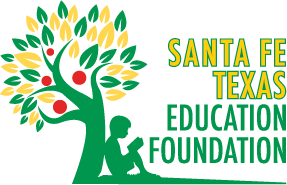
Preventing Common Youth Baseball Injuries
With the rise of youth baseball as a popular sport among children and teenagers, the need to ensure these young athletes play safely has never been more critical. Baseball, while immensely beneficial for physical health and team-building skills, also presents various risks for injuries that can sideline young players. The key to fostering a safe and encouraging environment lies in understanding the common injuries associated with youth baseball and implementing effective strategies to prevent them.
This article explores practical and actionable methods to protect young baseball enthusiasts by preventing injuries, promoting proper training, and highlighting the crucial role of immediate and expert care provided by facilities like Elitecare, a 24-Hour Pediatric and Adult Emergency Hospital adept at handling sports-related injuries. Learn how to keep your young athlete in the game and out of the emergency room by prioritizing health and safety on the baseball field.
Understanding Common Baseball Injuries
Baseball, like any sport, has its inherent risks, primarily due to the mechanics of throwing and hitting, as well as the demands of sudden athletic maneuvers such as sprinting, sliding, and abrupt stopping. Young athletes, whose bodies are still developing, are especially susceptible to certain types of injuries. Some of the most frequently observed injuries in youth baseball include:
Elbow and Shoulder Overuse Injuries: Pitchers are particularly vulnerable due to the repetitive stress of throwing, which can lead to conditions like Little League elbow (medial epicondyle apophysitis) and shoulder tendinitis.
Ankle Sprains: Often occur during base running or from awkward landings after catching a fly ball.
Concussions: These can happen from collisions with other players, being hit by a ball, or falling down while running the bases.
Muscle Strains: Common in the hamstrings, quadriceps, and calf muscles, often due to insufficient warm-ups, improper conditioning, or overexertion.
Understanding the mechanics leading to these injuries is the first step in prevention, helping coaches, parents, and players recognize the warning signs and implement safer playing practices.
Injury Prevention Strategies
To minimize the risk of youth baseball injuries, adopting a proactive approach toward injury prevention is crucial. The following strategies can be integral in maintaining young athlete health:
Proper Warm-Up and Cool-Down Routines: Encouraging players to engage in thorough warm-up exercises before games and practices can prepare their muscles and joints for the physical stress of baseball. Cooling down afterward helps in muscle recovery and flexibility.
Pitch Count Guidelines: Adhering to established pitch count limits and ensuring adequate rest periods between pitching appearances can prevent overuse injuries. Organizations such as Little League Baseball have specific guidelines that should be followed.
Cross-Training: Participating in varied sports activities can enhance overall fitness while reducing the risk of injuries caused by repetitive movements.
Proper Technique: Teaching young athletes the correct mechanics of throwing, batting, and fielding not only improves their performance but also reduces the risk of injury.
Role of Equipment and Environment
Appropriate equipment and a safe playing environment are critical components for injury prevention in youth baseball:
Protective Gear: Wearing the right protective equipment, such as helmets, protective eyewear, and batting gloves, can reduce the risk of head, eye, and hand injuries, respectively. Catchers, in particular, should always use proper gear, including chest protectors, shin guards, and a catcher’s helmet.
Field Maintenance: Ensuring the playing field is well-maintained and free of hazards (e.g., holes in the playing surface, broken bases) is essential to prevent injuries like sprains and fractures.
Quality Footwear: Proper shoes with adequate support and traction can prevent slips and falls, reducing the risk of leg and ankle injuries.
Education about the use of equipment and environmental safety should be ongoing among coaches, parents, and players to reinforce the importance of a safe playing field.
Importance of Medical Intervention and Education
Even with stringent preventive measures, injuries can still occur. Immediate and appropriate medical response is crucial:
On-Site First Aid: Basic first aid knowledge among coaches and other personnel involved in youth sports can help in providing immediate care for minor injuries, such as cuts or mild sprains.
Understanding When to Seek Help: Education on recognizing symptoms that require professional medical attention is fundamental. Persistent pain, swelling, dizziness, or an inability to move a limb are all indicators that a medical evaluation is necessary.
Early Intervention: Timely care can prevent minor injuries from becoming major ones. Elitecare’s 24-hour pediatric and adult emergency services ensure that young athletes receive prompt attention to sports injuries, minimizing the impact on their health and athletic future.
Continual education on injury symptoms and the risks associated with playing while injured can foster a safer sports environment.
Leadership Safety for Baseball Injuries
Creating a culture of safety within youth baseball begins with leadership from coaches and sports organizations. It’s important for those in charge to advocate for safety by:
Implementing Training and Continuing Education: Coaches and trainers should be up-to-date with the latest in sports safety and injury prevention.
Fostering Open Communication: Encouraging young players to speak up about their physical condition and any pain or discomfort they experience can help in addressing issues before they lead to serious injuries.
Incorporating Rest into Training Schedules: Recognizing the signs of fatigue and scheduling regular rest periods during practice and games can prevent overuse injuries.
Developing policies and practices focused on health and safety can guide coaches, parents, and players toward more responsible play and better injury management.
Ensuring a Safe Season for Young Athletes
Ensuring the safety of young athletes in youth baseball is not just about preventing injuries; it’s about fostering a culture of care, awareness, and immediate response that prioritizes their well-being above all. At Elitecare, we understand the critical role timely medical intervention plays in sports safety. By providing 24-hour emergency care, we ensure rapid, effective treatment for sports-related injuries, helping young athletes return to the field with confidence and health.
For parents, coaches, and young players seeking advice, treatment options, and support in sports-related injuries, don’t hesitate to contact Elitecare. We’re equipped to handle various medical situations with the expertise and compassion every young athlete deserves. Visit our emergency care facility today to learn more about how we can keep your child safe this baseball season and beyond. Your trust in us ensures their safety on and off the field.
















